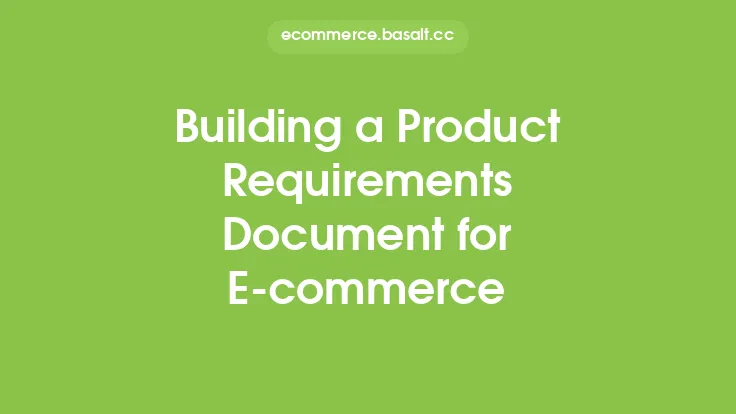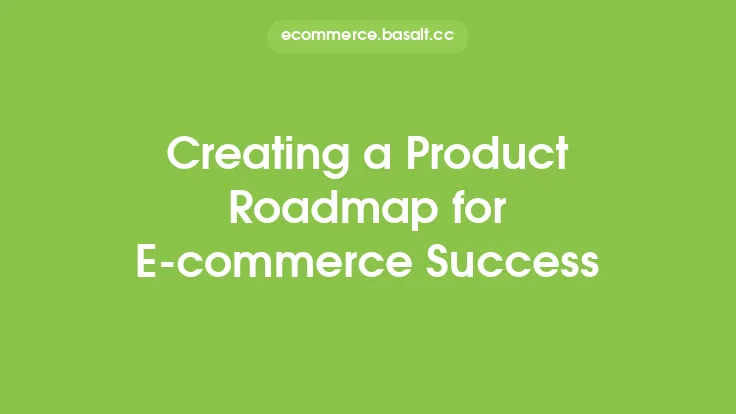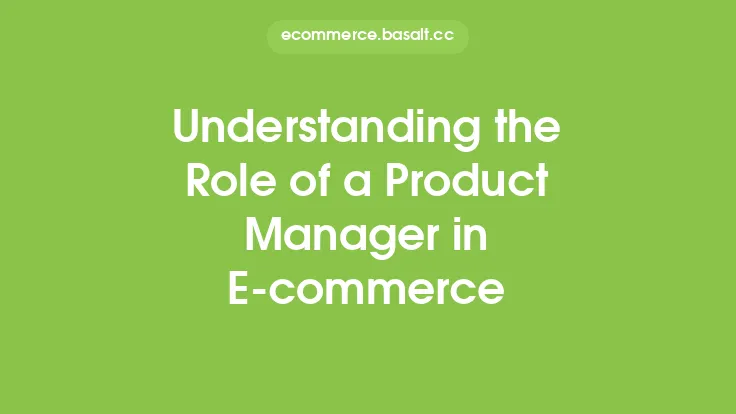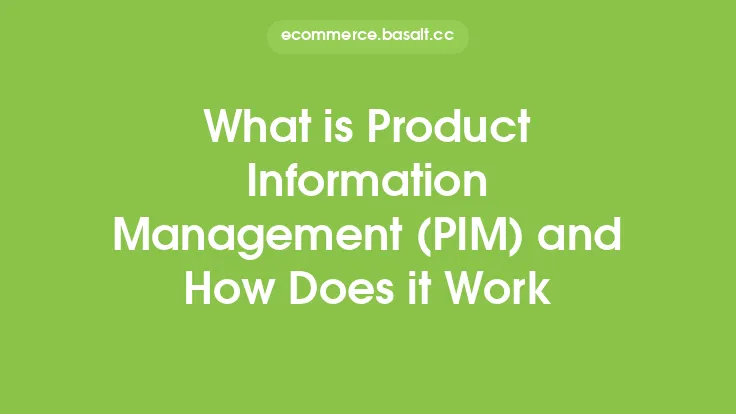Prioritizing product features and requirements is a critical aspect of product management in e-commerce. It involves evaluating and ranking the various features and requirements of a product to determine which ones to implement first, and how to allocate resources accordingly. This process is essential to ensure that the product meets the needs and expectations of its target market, while also being feasible to develop and maintain.
Introduction to Prioritization
Prioritization is a decision-making process that involves evaluating different options and selecting the most important or urgent ones to address first. In the context of product management, prioritization involves evaluating the various features and requirements of a product and determining which ones to implement first. This process is critical to ensure that the product is developed and launched on time, and that it meets the needs and expectations of its target market.
Benefits of Prioritization
Prioritization offers several benefits to product managers and e-commerce businesses. Some of the key benefits include:
- Ensuring that the product meets the needs and expectations of its target market
- Allocating resources effectively and efficiently
- Reducing the risk of scope creep and feature overload
- Improving the overall quality and usability of the product
- Enhancing the customer experience and increasing customer satisfaction
- Reducing development time and costs
Prioritization Frameworks and Techniques
There are several prioritization frameworks and techniques that product managers can use to evaluate and rank product features and requirements. Some of the most common frameworks and techniques include:
- MoSCoW method: This involves categorizing features and requirements into must-haves, should-haves, could-haves, and won't-haves.
- Kano model: This involves categorizing features and requirements into basic, performance, and excitement factors.
- Pareto analysis: This involves evaluating the features and requirements that will have the greatest impact on the product and its target market.
- Cost-benefit analysis: This involves evaluating the costs and benefits of each feature and requirement to determine which ones to implement first.
- Customer feedback and surveys: This involves gathering feedback and input from customers to determine which features and requirements are most important to them.
Best Practices for Prioritization
To prioritize product features and requirements effectively, product managers should follow several best practices. Some of the key best practices include:
- Involve stakeholders: Prioritization should involve input and feedback from stakeholders, including customers, developers, and business leaders.
- Use data and analytics: Prioritization should be based on data and analytics, rather than intuition or guesswork.
- Evaluate trade-offs: Prioritization involves evaluating trade-offs between different features and requirements, and determining which ones to implement first.
- Consider the customer experience: Prioritization should involve considering the customer experience and how different features and requirements will impact it.
- Review and revise: Prioritization is an ongoing process, and product managers should regularly review and revise their priorities to ensure that they remain relevant and effective.
Common Challenges and Pitfalls
Prioritization can be a challenging and complex process, and product managers may encounter several common challenges and pitfalls. Some of the key challenges and pitfalls include:
- Scope creep: This involves adding new features and requirements to the product without properly evaluating their priority or impact.
- Feature overload: This involves including too many features and requirements in the product, which can make it difficult to use and maintain.
- Lack of stakeholder input: This involves failing to involve stakeholders in the prioritization process, which can lead to a lack of buy-in and support.
- Insufficient data and analytics: This involves failing to use data and analytics to inform prioritization decisions, which can lead to poor decision-making.
- Inadequate resource allocation: This involves failing to allocate sufficient resources to support prioritization decisions, which can lead to delays and cost overruns.
Tools and Resources for Prioritization
There are several tools and resources that product managers can use to support prioritization. Some of the key tools and resources include:
- Product management software: This includes tools such as Jira, Asana, and Trello, which can be used to manage and prioritize product features and requirements.
- Prioritization frameworks and templates: This includes frameworks and templates such as the MoSCoW method and the Kano model, which can be used to evaluate and rank product features and requirements.
- Customer feedback and survey tools: This includes tools such as SurveyMonkey and UserTesting, which can be used to gather feedback and input from customers.
- Data and analytics tools: This includes tools such as Google Analytics and Mixpanel, which can be used to evaluate the impact of different features and requirements on the product and its target market.
Conclusion
Prioritizing product features and requirements is a critical aspect of product management in e-commerce. It involves evaluating and ranking the various features and requirements of a product to determine which ones to implement first, and how to allocate resources accordingly. By following best practices, using prioritization frameworks and techniques, and leveraging tools and resources, product managers can ensure that their products meet the needs and expectations of their target market, while also being feasible to develop and maintain.





